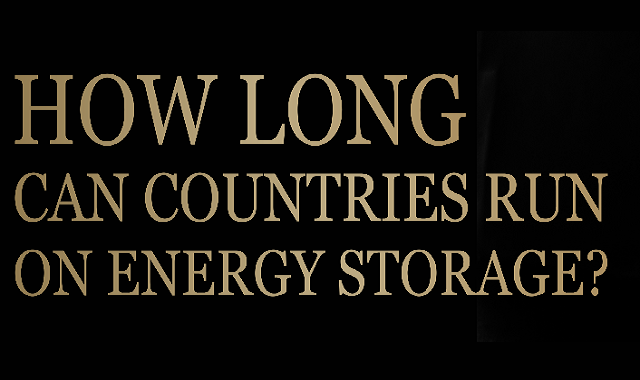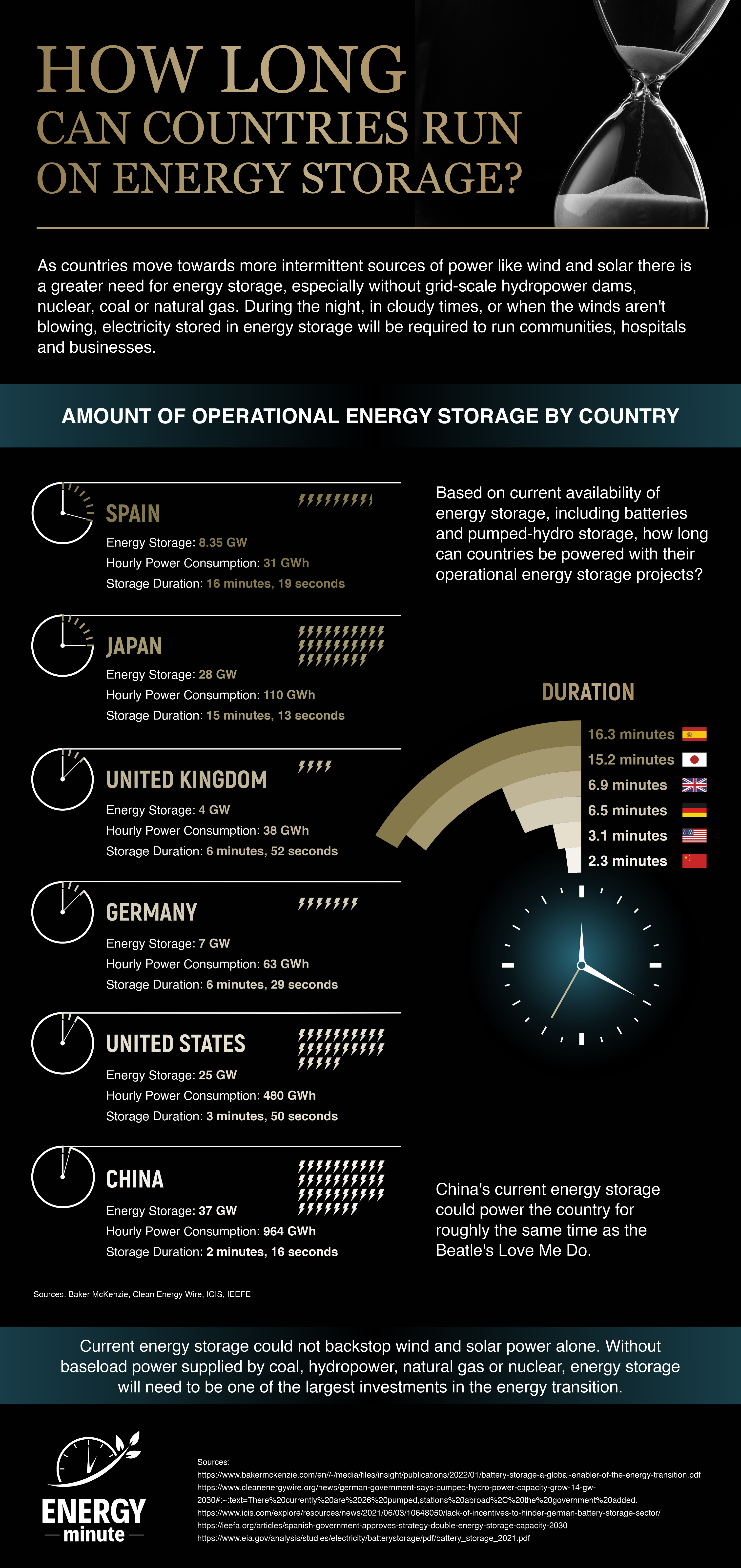For years, hydropower, coal and gas have been the primary
sources of producing energy worldwide. Countries have now started to adopt the
newer methods using intermittent sources of power like solar and wind. Due to
these sources, the need of energy storage has increased especially because now
grid-scale power dams, coal, natural gas and nuclear is not the source. These
sources are quite useful but there are challenges like during the night and
when weather is cloudy or there is no wind blowing. Due to these challenges
energy stored in the energy storages will have to be utilized in order to run
communities, businesses and hospitals.
Amount of operational energy storage by country:
Let’s explore that how long can different countries be
powered with their operational energy storage projects based on the
availability of existing energy storages including batteries and pumped-hydro
storage.
|
Country |
Energy Storage (GW) |
Hourly Power Consumption (Gwh) |
Storage Duration (Minutes) |
|
Spain |
8.35 |
31 |
16.3 |
|
Japan |
28 |
110 |
15.2 |
|
United Kingdom |
4 |
38 |
6.9 |
|
Germany |
7 |
63 |
6.5 |
|
United States |
25 |
480 |
3.9 |
|
China |
37 |
964 |
2.3 |
The existing energy storage could not backstop wind and solar power alone. Without base load power supplied by hydropower, coal, and natural gas or nuclear, energy storage would be one of the biggest investments in the energy transition.
Infographic by: energyminute


